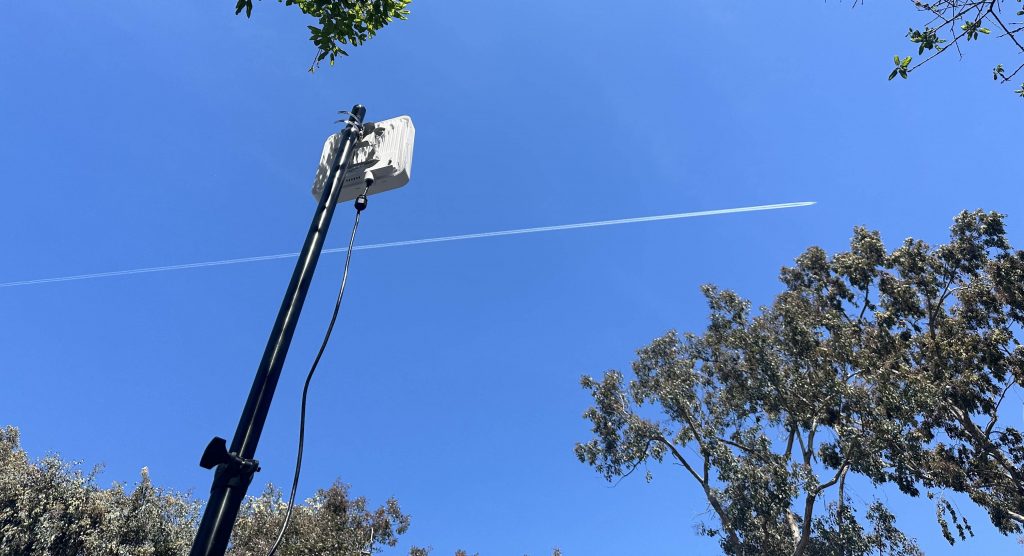Fixed wireless access (FWA) is an intriguing alternative for broadband internet delivery, particularly in regions where laying fiber optic cables is economically or logistically impractical. However, legacy FWA systems have lacked the necessary scale, speed, and reliability. Next-generation FWA (ngFWA) has upped the ante with a compelling way to deliver endgame broadband.
1. Faster Deployment
One of the most significant advantages of next-generation FWA is the speed of deployment. Traditional broadband solutions like fiber require extensive physical infrastructure, which can take months or even years to establish, particularly in rural or undeveloped areas. ngFWA, on the other hand, primarily requires a central transmission tower and antennas at customer locations, dramatically cutting down on deployment time. ngFWA is particularly useful in this regard thanks to features such as interference cancellation which reduces the delay that might occur with legacy systems of finding sufficient spectrum in busy RF environments.
2. Reduced Infrastructure Costs
The cost of deploying fiber optic networks can be prohibitively high, particularly when considering the excavation and physical laying of cables. ngFWA eliminates many of these costs. Since it relies on radio waves transmitted over the air, it requires much less physical infrastructure, reducing not only the upfront costs but also the ongoing maintenance expenses associated with underground or overhead cables. This cost-effectiveness makes ngFWA a viable option for service providers aiming to expand their network without massive capital expenditures.
3. Improved Accessibility in Remote Areas
ngFWA shines in its ability to provide high-speed internet in remote and rural areas where other broadband types are unavailable or not cost-effective. Obstacles, such as mountains and rivers, that complicate cable laying do not typically affect radio waves, allowing ngFWA to bridge the digital divide more effectively. This increased accessibility can have profound implications for remote education, healthcare, and business opportunities, directly contributing to regional development.
4. Scalability and Flexibility
Next-generation FWA networks are highly scalable beyond what has been previously possible for legacy FWA systems. ngFWA’s architecture means new subscribers can be added, without the need for significant additional infrastructure (many towers, etc.). This flexibility allows providers to scale their services according to demand in a way that is not as straightforward with wired connections where miles of fiber might need to be laid to reach a handful of subscribers.
5. Resilience to Physical Damage
Unlike wired connections, which can suffer from cuts and damage due to construction, natural disasters, or decay, ngFWA is less prone to such physical vulnerabilities. Since the critical infrastructure is airborne and minimal, it is less likely to be disrupted by these events. This resilience ensures more consistent service availability and reduces the risk and cost of repairs.
6. Technological Advancements
The technological advancements in next-generation FWA, as exemplified by the Tarana ngFWA platform, have significantly enhanced performance and reliability. Through innovations such as very precise digital beamforming, and interference cancellation, Tarana can deliver speeds that rival traditional broadband solutions. These advancements make next-generation FWA not only a practical alternative but also a technically competitive option for rural, urban and suburban areas.
7. Environmental Impact
ngFWA also offers benefits from an environmental perspective. The reduced need for physical infrastructure means that there is less disruption to landscapes and ecosystems during installation. This minimal environmental footprint is particularly advantageous in ecologically sensitive areas where laying cables might be restricted.
Conclusion
Next-generation fixed wireless access presents a compelling package of speed, cost-effectiveness, accessibility, reliability, and resilience. While traditional wired broadband will always have a place in broadband discussions, next-generation ngFWA offers a robust alternative – or complement – to fiber that redefines internet accessibility, making it a key player in bridging the digital divide and fostering more inclusive digital connectivity.
If you just can’t wait to learn more, check out our other blogs or some of our favorite customer links. Or reach out to us at info@taranawireless.com. We’d love to hear from you.
